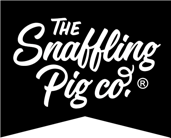What's the difference between pork scratchings, pork crackling and pork crunch / pork rind? November 13, 2018 18:24
So, you've landed on this page probably because one of your mates has got a round in and just plonked a classic pub snack labelled "pork crackling" on the table. But the pack you had last week was labelled "pork scratchings". And the week before that, you're fairly certain, they were called "pork crunch" but your American mate called them "pork rind". While on the surface, these three classic snacks might look similar, we wanted to take a moment to explain their differences.
What are the differences between pork snacks?
In simple terms, the difference between pork scratchings, crackling and rinds typically comes from the way they are cooked:
- Pork scratchings are traditionally cooked once and are the hardest of these three. We cook ours twice to achieve a more consistent snack, far less threatening to the ol' gnashers but just as satisfying.
- Pork crackling is cooked twice. The second cook lightens the edge of the pork which puffs it a little, resulting in more flavour with less tooth-shattering crunch.
- Pork rind is also cooked twice but at a higher temperature, resulting in a lighter, fluffier snack that's full of flavour. Pork crunch is a British term for the same snack. At Snaffling Pig we call them Porky Puffs or Pork Puffs
What are pork scratchings?
Pork scratchings are a centuries-old popular snack made by frying the pork skin taken from the pig's shank (top of the pig's hind leg). Scratchings are cooked once, meaning they are harder and crunchier than their porky cousins. Pork scratchings don’t need much seasoning as they still hold a lot of the pork flavour, so generally only salt is added. Hardened pork snack traditionalists love pork scratchings.
What is pork crackling?
Pork crackling is a lighter pork snack made by twice frying pig's skin taken from either the shoulder or the shank. The second cook is more of a flash fry and causes the scratching to inflate, adding more air to the product, making the consequent crackling lighter and crunchier than pork scratchings. The second fry naturally reduces some of the pork's flavour, and so is a great opportunity to add exciting seasonings. At Snaffling Pig HQ (or Pork Knox as its known), we have added maple, chilli, black pepper and loads more great flavours at this stage.
Did you know?
Pork crackling is often called "cracklins" in the US, "oreilles de crisse" in Canada, "torresmos" in Portugal and "chicharon" in the Philippines.
What is pork rind? What is a pork puff?
Pork rind is the lightest of these three snacks and is made in a similar way to pork crackling. Rind is cooked the second time at a much higher temperature, which "shocks" the pork scratching and inflates it even more, turning the crunch into a meaty quaver-like crisp. Pork rinds have the greatest surface area of the pork snacks here so can hold a huge amount of seasoning and additional flavour. We also now do an air-popped product, cleverly named Popped Pork. You can read here about the differences between Porky Puffs and Popped Pork.
Did you know?
Snaffling Pig calls pork rind and pork crunch, "Porky Puffs" or "Pork Puffs". Snacks like Snaffling Pig's Porky Puffs have a greater protein to fat ratio than pork scratchings and pork crackling and so could be a great option on a ketogenic diet. In moderation, pork scratchings can even be seen as a healthy snack.




